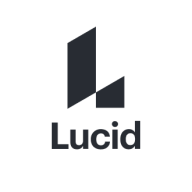

Find out in this report how the two Visual Collaboration Platforms solutions compare in terms of features, pricing, service and support, easy of deployment, and ROI.
| Product | Market Share (%) |
|---|---|
| Figma | 41.1% |
| Lucidchart | 6.7% |
| Other | 52.199999999999996% |


| Company Size | Count |
|---|---|
| Small Business | 8 |
| Midsize Enterprise | 2 |
| Large Enterprise | 4 |
| Company Size | Count |
|---|---|
| Small Business | 26 |
| Midsize Enterprise | 14 |
| Large Enterprise | 25 |
Figma is a cloud-based design tool that allows teams to collaborate in real-time on creating, prototyping, and iterating digital designs. With its intuitive interface and powerful features, Figma has become popular among designers and design teams. Figma's cloud-based nature ensures that designs are always up-to-date and accessible from anywhere. This makes it easy for teams to collaborate remotely or across different locations, fostering a more efficient and flexible workflow.
One of the key features of Figma is its real-time collaboration capabilities. Multiple team members can work on a design simultaneously, making it easy to gather feedback, make changes, and iterate quickly. This eliminates the need for time-consuming file sharing and version control, streamlining the design process.
Figma also offers a wide range of design tools and features to help designers bring their ideas to life. From vector editing and prototyping to design components and libraries, Figma provides everything designers need to create high-quality, interactive designs. Its robust design system allows for easy reuse of design elements, ensuring consistency across projects.
Another advantage of Figma is its cross-platform compatibility. It works seamlessly on both Mac and Windows operating systems, making it accessible to designers regardless of their preferred platform. Additionally, Figma offers a web-based version, allowing users to access their designs from any device with an internet connection.
Our online diagram application makes it easy to sketch and share professional flowchart diagrams. From brainstorming to project management, we support all of your communication needs. That’s why millions of users choose Lucidchart.
We monitor all Visual Collaboration Platforms reviews to prevent fraudulent reviews and keep review quality high. We do not post reviews by company employees or direct competitors. We validate each review for authenticity via cross-reference with LinkedIn, and personal follow-up with the reviewer when necessary.